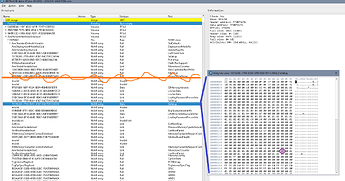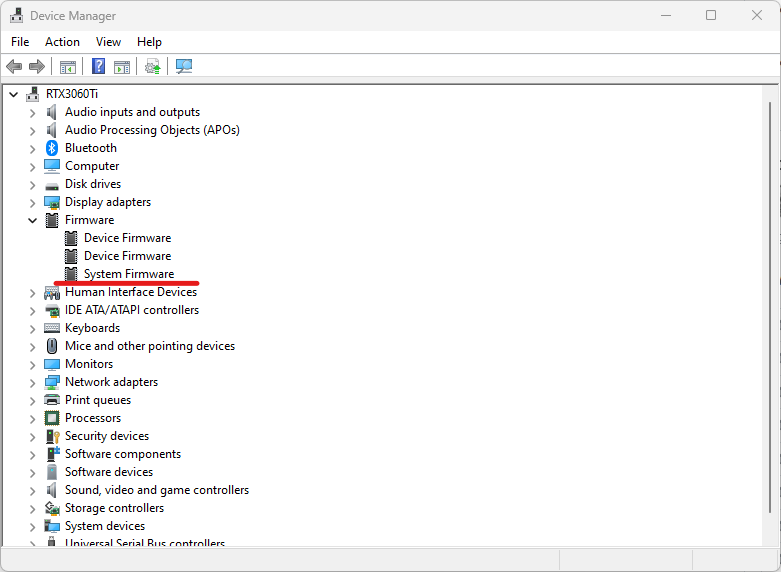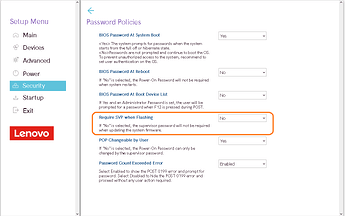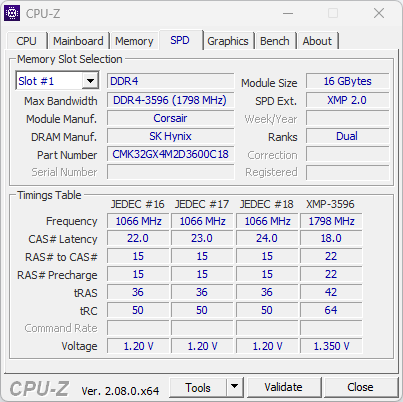Ok I followed the guide present at this link on GitHub because the guide present at the link you posted is confusionary (for me), some tools are missing and it is not clear if it is a full guide or if some parts excluded some others.
By the way I report here the process and at the end I have a question.
With ifrextractor.exe I got 2 files (“0” and “1”), the “0” file seems totally unuseful (full of Invalid) while “1” is good. I attach here the “1” extracted with ifrextractor.exe and the one “elaborated” with “IFR-Formatter.js”.
In the first one there is this piece of “code” related to XMP:
0xACBB7: OneOf Prompt: "Memory profile", Help: "Select DIMM timing profile. The below values start with the currently running values and don't auto populate.", QuestionFlags: 0x14, QuestionId: 0x276C, VarStoreId: 0x5, VarOffset: 0x18D, Flags: 0x10, Size: 8, Min: 0x0, Max: 0x6, Step: 0x0 { 05 91 54 08 55 08 6C 27 05 00 8D 01 14 10 00 06 00 }
0xACBC8: OneOfOption Option: "Default SPD Profile" Value: 0, Default, MfgDefault { 09 07 56 08 30 00 00 }
0xACBCF: OneOfOption Option: "Custom Profile" Value: 1 { 09 07 5A 08 00 00 01 }
0xACBD6: SuppressIf { 0A 82 }
0xACBD8: Get VarStoreId: 0x5, VarStoreInfo: 0x2, VarStoreType: 0x0 { 2B 87 05 00 02 00 00 }
0xACBDF: Uint64 Value: 0x1 { 45 0A 01 00 00 00 00 00 00 00 }
0xACBE9: BitwiseAnd { 35 02 }
0xACBEB: Uint64 Value: 0x0 { 45 0A 00 00 00 00 00 00 00 00 }
0xACBF5: Equal { 2F 02 }
0xACBF7: Uint64 Value: 0x0 { 45 0A 00 00 00 00 00 00 00 00 }
0xACC01: Uint64 Value: 0x1 { 45 0A 01 00 00 00 00 00 00 00 }
0xACC0B: Conditional { 50 02 }
0xACC0D: End { 29 02 }
0xACC0F: OneOfOption Option: "XMP Profile 1" Value: 2 { 09 07 57 08 00 00 02 }
0xACC16: End { 29 02 }
0xACC18: SuppressIf { 0A 82 }
0xACC1A: Get VarStoreId: 0x5, VarStoreInfo: 0x2, VarStoreType: 0x0 { 2B 87 05 00 02 00 00 }
0xACC21: Uint64 Value: 0x2 { 45 0A 02 00 00 00 00 00 00 00 }
0xACC2B: BitwiseAnd { 35 02 }
0xACC2D: Uint64 Value: 0x0 { 45 0A 00 00 00 00 00 00 00 00 }
0xACC37: Equal { 2F 02 }
0xACC39: Uint64 Value: 0x0 { 45 0A 00 00 00 00 00 00 00 00 }
0xACC43: Uint64 Value: 0x1 { 45 0A 01 00 00 00 00 00 00 00 }
0xACC4D: Conditional { 50 02 }
0xACC4F: End { 29 02 }
0xACC51: OneOfOption Option: "XMP Profile 2" Value: 3 { 09 07 58 08 00 00 03 }
0xACC58: End { 29 02 }
0xACC5A: SuppressIf { 0A 82 }
0xACC5C: Get VarStoreId: 0x5, VarStoreInfo: 0x2, VarStoreType: 0x0 { 2B 87 05 00 02 00 00 }
0xACC63: Uint64 Value: 0x4 { 45 0A 04 00 00 00 00 00 00 00 }
0xACC6D: BitwiseAnd { 35 02 }
0xACC6F: Uint64 Value: 0x0 { 45 0A 00 00 00 00 00 00 00 00 }
0xACC79: Equal { 2F 02 }
0xACC7B: Uint64 Value: 0x0 { 45 0A 00 00 00 00 00 00 00 00 }
0xACC85: Uint64 Value: 0x1 { 45 0A 01 00 00 00 00 00 00 00 }
0xACC8F: Conditional { 50 02 }
0xACC91: End { 29 02 }
0xACC93: OneOfOption Option: "XMP Profile 3" Value: 4 { 09 07 59 08 00 00 04 }
0xACC9A: End { 29 02 }
0xACC9C: SuppressIf { 0A 82 }
0xACC9E: Get VarStoreId: 0x5, VarStoreInfo: 0x2, VarStoreType: 0x0 { 2B 87 05 00 02 00 00 }
0xACCA5: Uint64 Value: 0x8 { 45 0A 08 00 00 00 00 00 00 00 }
0xACCAF: BitwiseAnd { 35 02 }
0xACCB1: Uint64 Value: 0x0 { 45 0A 00 00 00 00 00 00 00 00 }
0xACCBB: Equal { 2F 02 }
0xACCBD: Uint64 Value: 0x0 { 45 0A 00 00 00 00 00 00 00 00 }
0xACCC7: Uint64 Value: 0x1 { 45 0A 01 00 00 00 00 00 00 00 }
0xACCD1: Conditional { 50 02 }
0xACCD3: End { 29 02 }
0xACCD5: OneOfOption Option: "XMP User Profile 4" Value: 5 { 09 07 5B 08 00 00 05 }
0xACCDC: End { 29 02 }
0xACCDE: SuppressIf { 0A 82 }
0xACCE0: Get VarStoreId: 0x5, VarStoreInfo: 0x2, VarStoreType: 0x0 { 2B 87 05 00 02 00 00 }
0xACCE7: Uint64 Value: 0x10 { 45 0A 10 00 00 00 00 00 00 00 }
0xACCF1: BitwiseAnd { 35 02 }
0xACCF3: Uint64 Value: 0x0 { 45 0A 00 00 00 00 00 00 00 00 }
0xACCFD: Equal { 2F 02 }
0xACCFF: Uint64 Value: 0x0 { 45 0A 00 00 00 00 00 00 00 00 }
0xACD09: Uint64 Value: 0x1 { 45 0A 01 00 00 00 00 00 00 00 }
0xACD13: Conditional { 50 02 }
0xACD15: End { 29 02 }
0xACD17: OneOfOption Option: "XMP User Profile 5" Value: 6 { 09 07 5C 08 00 00 06 }
0xACD1E: End { 29 02 }
0xACD20: End { 29 02 }
0xACD22: GrayOutIf { 19 82 }
0xACD24: EqIdValList QuestionId: 0x276C, Values: [0, 1, 5, 6] { 14 8E 6C 27 04 00 00 00 01 00 05 00 06 00 }
0xACD32: EqIdVal QuestionId: 0xC3, Value: 0x1 { 12 06 C3 00 01 00 }
0xACD38: Or { 16 02 }
0xACD3A: End { 29 02 }
The first line is this:
0xACBB7: OneOf Prompt: "Memory profile", Help: "Select DIMM timing profile. The below values start with the currently running values and don't auto populate.", QuestionFlags: 0x14, QuestionId: 0x276C, VarStoreId: 0x5, VarOffset: 0x18D, Flags: 0x10, Size: 8, Min: 0x0, Max: 0x6, Step: 0x0 { 05 91 54 08 55 08 6C 27 05 00 8D 01 14 10 00 06 00 }
where I see this info:
VarStoreId: 0x5, VarOffset: 0x18D, Flags: 0x10, Size: 8
I suppose that Size is expressed in bit but we pass it in byte with the command setup_var_cv.
Now if I search for VarStoreId: 0x5 I find this line:
0xA8FC6: VarStore Guid: 72C5E28C-7783-43A1-8767-FAD73FCCAFA4, VarStoreId: 0x5, Size: 0x4A7, Name: "SaSetup" { 24 1E 8C E2 C5 72 83 77 A1 43 87 67 FA D7 3F CC AF A4 05 00 A7 04 53 61 53 65 74 75 70 00 }
so SaSetup is declared here but its Size is 0x4A7. It may be confusing because if I understood well it is the total size.
For a newbie like me it is better to use “IFR-Formatter.js” and search for “VarStore: SaSetup | VarOffset: 0x18D” (with values from the previous output data) where the output is this one:
Memory Overclocking Menu
Memory profile | VarStore: SaSetup | VarOffset: 0x18D | Size: 0x1
Default SPD Profile: 0x0
Custom Profile: 0x1
XMP Profile 1: 0x2
XMP Profile 2: 0x3
XMP Profile 3: 0x4
XMP User Profile 4: 0x5
XMP User Profile 5: 0x6
I hope that this will be useful for someone.
So my question now is:
with this approach I can change some other features without corrupt motherboard? If I understand better the use of setup_var_cv command changes only the current values that are maintained by the battery, it’s almost impossible to damage the motherboard or corrput the BIOS itself, isn’t it?






